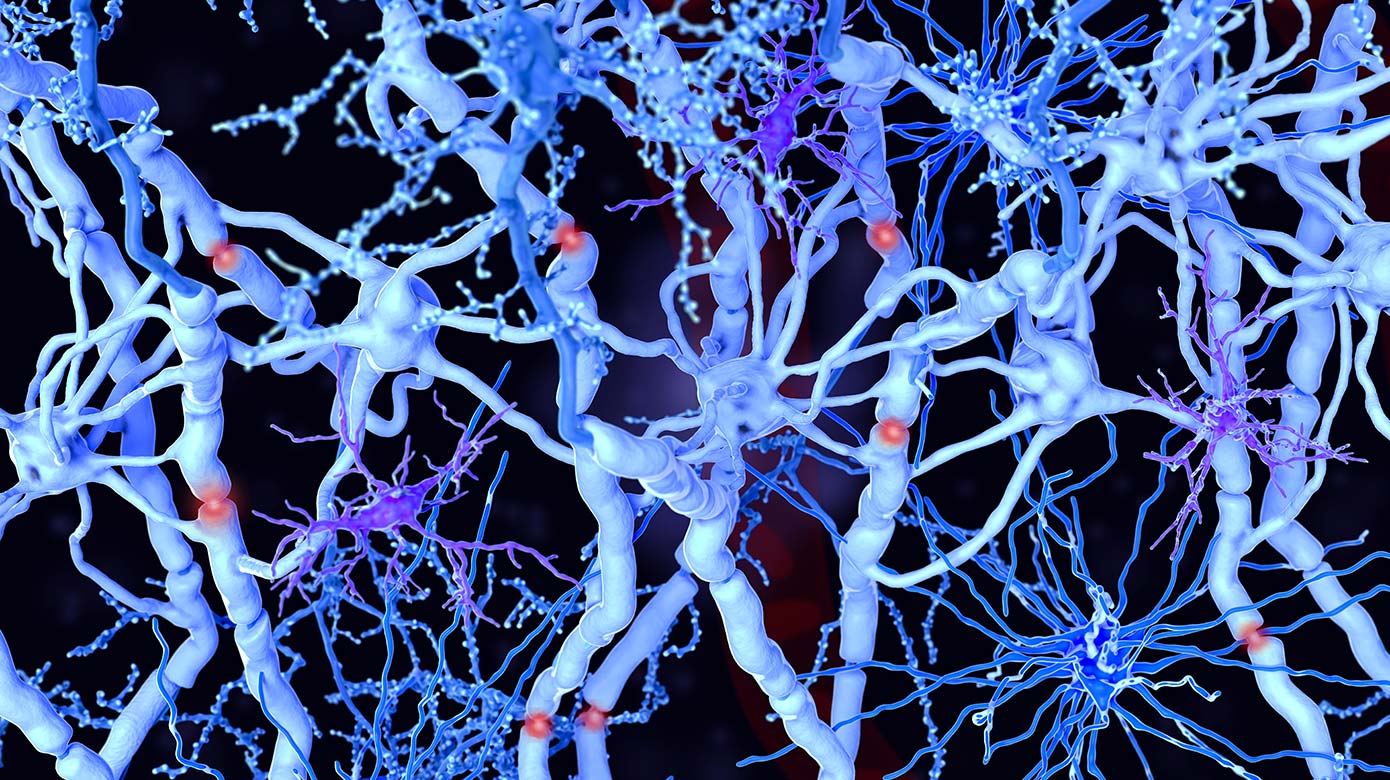White Matter Diseases

White matter is brain tissue that carries information between the nerve cells in the brain and spinal cord. When white matter doesn’t develop the way it should, or is somehow damaged, the result can be mental retardation and developmental disabilities. Disorders associated with loss of white matter include leukodystrophies (an inherited form of white matter malfunction), acute demyelinating encephalomyelitis (ADEM) and cerebral palsy, which is the most common disorder associated with white matter malfunction. Unfortunately, modern medicine has a very limited understanding of the causes of white matter diseases. Scientists at Children's National Hospital are working to change that.
Myelin formation during postnatal brain development represents one of the most crucial steps in brain development and is necessary for functional connections between neurons. Tarik Haydar, Ph.D., studies white matter development. Dr. Haydar’s lab is focused on development of the oligodendrocyte lineage in Down syndrome. Multiple approaches, ranging from mouse models to studies with human-induced pluripotent stem cells, are focused on understanding the molecular changes that prevent oligodendrocyte maturation and as a platform with which to evaluate possible therapeutic strategies.
Investigators at Children's National study how white matter develops and grows, including the intricacies of these developmental processes in utero. Better understanding how typical white matter develops may help scientists learn how to stimulate re-growth of white matter after injury or deterioration. Investigators from the Center for Genetic Medicine Research through the White Matter Disease Program use advanced gene sequencing and protein analysis to develop new tools to diagnose and eventually treat white matter disorders, including:
- Vanishing white matter disease
- Down syndrome
- Alexander disease
- Megalencephalic leukoencephalopathy with subcortical cysts
- Oligodendrocyte precursor cells (OPC)
- Hypomyelinating leukodystrophies (HML)
- Unclassified or undiagnosed leukodystrophies
The White Matter Disease Program currently offers testing programs for vanishing white matter, unclassified white matter disease and hypomyelinating leukodystrophies.
